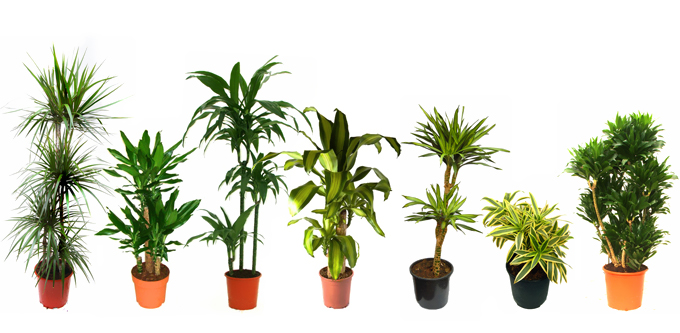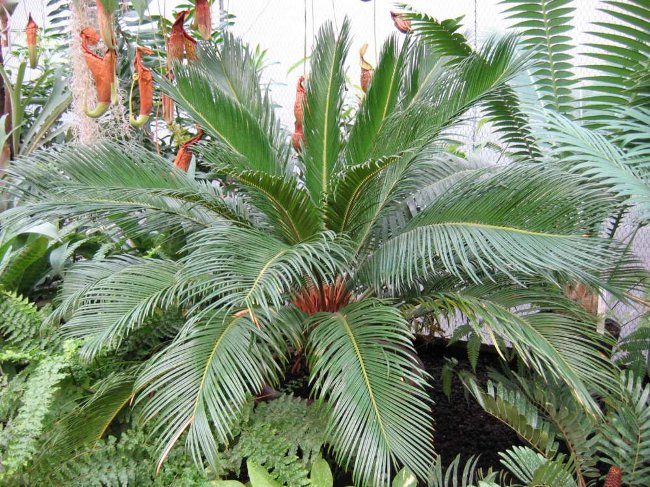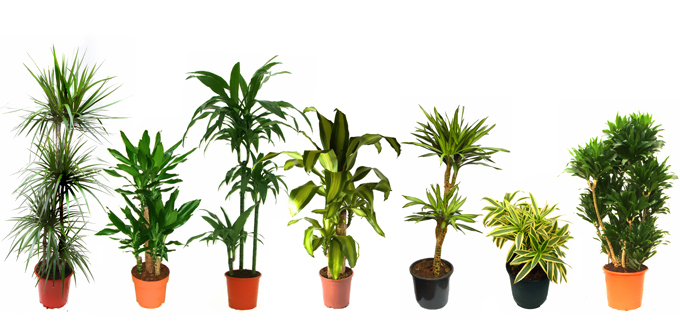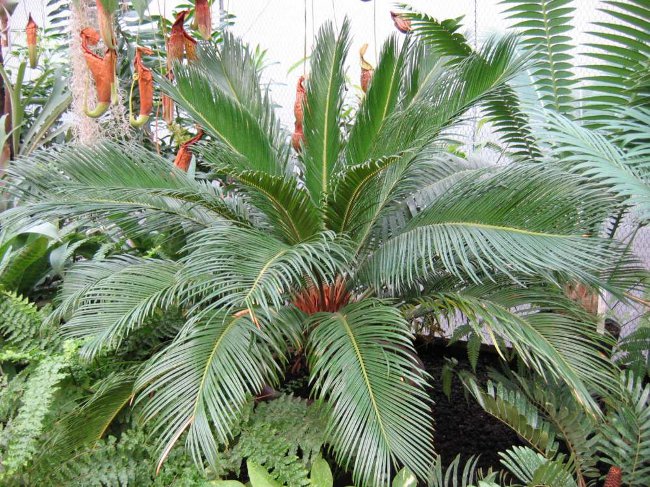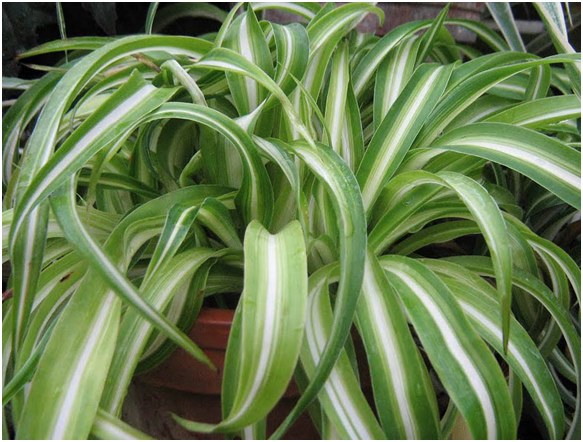Cypherus: features of care
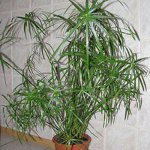
Cyperus belongs to the sedge family and is a direct relative of the papyrus. Simple maintenance and easy reproduction make cyperus one of the favorite indoor plants.
The homeland of this exotic plant is considered to be Madagascar and the subtropics of Africa. In Europe, the cyperus fell in the first half of the 18th centurycentury. This cute herb plant with thin trihedral stems, which end with elegant umbrellas. Depending on the type of cyperus, the leaves can be light green, dark green, or have a two-color color. In natural conditions, the cyperus can form dense thickets in the swampy terrain and along the banks of rivers. Therefore, this perennial marsh plant can be used for landscaping an artificial pond or fountain.
At home, the cyperus can reach a height of up to 3 meters, the maximum height of specimens grown at home is usually from 0.5 to 1.7 m.
A peculiarity of the care of this plant is that the cyperus is a marsh plant requires constant humidity. Does not tolerate dry air and only grows instrongly waterlogged soil. Therefore, the pot tray in which the cyperus grows must be constantly filled with water. Cypherus is often sprayed. In spring and summer, the pot with this plant can simply be put in a bowl with water.
Well suits cyperus for growing in an artificial reservoir. To do this, you must put a pot of plant in the pond so that the water slightly covers it, and on the surface sticking out green umbrellas. This decoration of the reservoir looks very impressive.
The cyperus reacts well to fresh air, so for the spring-summer period its it is better to put on a balcony or take out into the yard. And in the cold season, the room with the plant should be regularly ventilated.
The optimum temperature is 18-20 ° C, in winter cyperus tolerates the temperature drop well up to 10-12 ° C. Tsiperus unpretentious to lighting. Perfectly tolerates direct sunlight, normally feels in the penumbra, can grow under artificial illumination.
In spring and summer cyperus needs feeding. Suitable organic or mineral fertilizers. Top dressing is done every 10-14 days.
Cypherus does not require frequent transplants. Transplant this plant is recommended whenit becomes clearly visible that the green kid "grew" from his pot. This is better done in late February - early March. The soil must be a mixture of turf, leaf land, humus, sand and peat.
As a moisture-loving plant, cyperus is remarkably grown on hydroponics.
The cyperus multiplies by dividing the bush orThe vegetative method, namely the apical stem cuttings. To do this, it is necessary to cut off a part of the stem with an umbrella and turn the umbrella down, put it in water, or put it in moist sand. In 10-14 days, the roots will appear, then tsiperus can be planted in the ground. Some owners of the cyperus simply tilt the umbrella in a glass of water, and cut off the stem only after the plant has taken root.
When the plant multiplies bush division it must be divided into several parts, 2-3 shoots each, with a sharp knife. In doing so, try to disturb as little as possible an earth clod.
If the air in the room is too dry, tsiperus can suffer from a spider mite. In this case, the umbrella leaves start to turn yellowand dry. In order to get rid of the pest, the plant must be treated with a special drug against the spider mite. And in order to increase the humidity of the air, on the windowsill with the cyperus it is possible to put a wide container with water, which, evaporating, will enrich the air with moisture.
Since cyperus does not require special care skills, this plant ideal for growing not only in an apartment, but also in kindergartens. Children like bright green umbrellas of the cyperus, and watering and reproduction of this plant bring them a lot of positive emotions.


